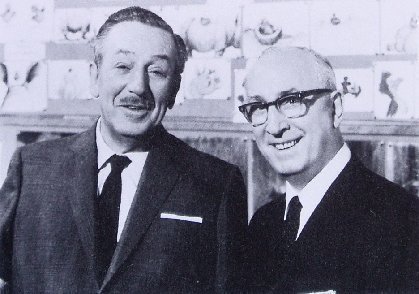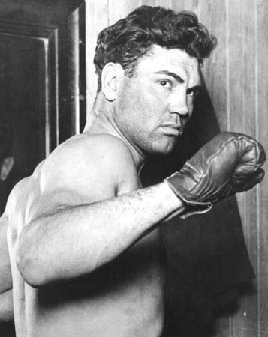
Cheesecake is a sweet dessert consisting of one or more layers. The main, and thickest, layer consists of a mixture of a soft, fresh cheese (typically cottage cheese, cream cheese or ricotta), eggs, and sugar. If there is a bottom layer, it most often consists of a crust or base made from crushed cookies (or digestive biscuits), graham crackers, pastry, or sometimes sponge cake. Cheesecake may be baked or unbaked (and is usually refrigerated).
Cheesecake is usually sweetened with sugar and may be flavored in different ways. Vanilla, spices, lemon, chocolate, pumpkin, or other flavors may be added to the main cheese layer. Additional flavors and visual appeal may be added by topping the finished dessert with fruit, whipped cream, nuts, cookies, fruit sauce, chocolate syrup, or other ingredients.
An ancient form of cheesecake may have been a popular dish in ancient Greece even prior to Romans' adoption of it with the conquest of Greece. The earliest attested mention of a cheesecake is by the Greek physician Aegimus (5th century BCE), who wrote a book on the art of making cheesecakes (πλακουντοποιικόν σύγγραμμα—plakountopoiikon sungramma). The earliest extant cheesecake recipes are found in Cato the Elder's De Agri Cultura, which includes recipes for three cakes for religious uses: libum, savillum and placenta. Of the three, placenta cake is the most like modern cheesecakes: having a crust that is separately prepared and baked.
A more modern version called a sambocade, made with elderflower and rose water, is found in Forme of Cury, an English cookbook from 1390. On this basis, chef Heston Blumenthal has argued that cheesecake is an English invention.
The English name cheesecake has been used only since the 15th century, and the cheesecake did not evolve into its modern form until somewhere around the 18th century. Europeans began removing yeast and adding beaten eggs to the cheesecake instead. With the overpowering yeast flavor gone, the result tasted more like a dessert treat. The early 19th-century cheesecake recipes in A New System of Domestic Cookery by Maria Rundell are made with cheese curd and fresh butter. One version is thickened with blanched almonds, eggs and cream, and the cakes may have included currants, brandy, raisin wine, nutmeg and orange flower water.
Modern commercial American cream cheese was developed in 1872, when William Lawrence, from Chester, New York, while looking for a way to recreate the soft, French cheese Neufchâtel, accidentally came up with a way of making an "unripened cheese" that is heavier and creamier; other dairymen came up with similar creations independently.
Modern cheesecake comes in two different types. Along with the baked cheesecake, some cheesecakes are made with uncooked cream cheese on a crumbled-cookie or graham cracker base. This type of cheesecake was invented in the United States.
Cheesecakes can be broadly categorized into two basic types: baked and unbaked. Some do not have a crust or base. Cheesecake comes in a variety of styles based on region:
South Africa
One popular variant of cheesecake in South Africa is made with whipped cream, cream cheese, gelatin for the filling, and a buttered digestive biscuit crust. It is not baked, and is sometimes made with Amarula liqueur. This variant is very similar to British cheesecake. This cheesecake is more common in British South African communities.
Japan
Japanese cheesecake, or soufflé style or cotton cheesecake, is made with cream cheese, butter, sugar, and eggs, and has a characteristically wobbly, airy texture, similar to chiffon cake. No-bake cheesecakes are known as rare cheesecake.
Philippines
The most prominent version of cheesecake in the Philippines is ube cheesecake. It is made with a base of crushed graham crackers and an upper layer of cream cheese and ube halaya (mashed purple yam with milk, sugar, and butter). It can be prepared baked or simply refrigerated. Like other ube desserts in the Philippines, it is characteristically purple in color.
Russia
Russian-style cheesecake (Vatrushka) is in the form of a dough ring and filled with quark or cottage cheese.
United States
The United States has several different recipes for cheesecake and this usually depends on the region in which the cake is baked, as well as the cultural background of the person baking it.
Chicago
Chicago-style cheesecake is a baked cream-cheese version that is firm on the outside with a soft and creamy texture on the inside. These cheesecakes are often made in a greased cake pan and are relatively fluffy in texture. The crust used with this style of cheesecake is most commonly made from shortbread that is crushed and mixed with sugar and butter. Some frozen cheesecakes are Chicago-style.
New York
New York–style cheesecake uses a cream cheese base, also incorporating heavy cream or sour cream. The typical New York cheesecake is rich and has a dense, smooth, and creamy consistency.
You don't have to turn your oven on to enjoy a slice of one of your favorite desserts! Our No-Bake Cheesecake is an easy cheesecake recipe that'll leave them (and you!) cheering.
- 1 (8-ounce) package cream cheese, softened
- 1/2 cup sugar
- 1 cup (1/2 pint) sour cream
- 2 teaspoons vanilla extract
- 1 (8-ounce) container frozen whipped topping, thawed
- 1 prepared 9-inch graham cracker pie crust
- In a large bowl, beat cream cheese until smooth. Gradually beat in sugar, then blend in sour cream and vanilla. Fold in whipped topping until well mixed.
- Spoon mixture into pie crust.
- Chill 4 to 5 hours, or until set. Keep refrigerated.
1895 – Jack Dempsey, American boxer and soldier (d. 1983)
1931 – Billy Casper, American golfer and architect (d. 2015)
1942 – Michele Lee, American actress
Every year employees across the country bring their dogs to work the Friday after Father’s Day. It’s National Take Your Dog to Work Day.
A celebration of the companionship between canine and human, National Take Your Dog to Work Day hopes to inspire others to adopt from shelters and humane societies. Those in the pet supply business may find this to be an everyday occurrence. With pets being central to their business platform, employees bring their dogs to work frequently. Companies such as Petco, Petsmart, Mars Petcare, Trupanion, and Nestle Purina Petcare all have pet-friendly policies. So, every day is Take Your Dog to Work Day at these companies.
However, not only pet companies are dog friendly these days. Tech and marketing businesses seem to be next in line for offering this perk to employees. Amazon, Airbnb, Procore Technologies, Vungle, and Radio Systems Corporation are just a few of the companies across the nation supporting pet-friendly policies.
Are there benefits to having a dog by your side all day? As any business knows, policies like these come with pros and cons.
Pros of Pet-Friendly Policies
- Perhaps the number one benefit of dogs at work is the reduced stress for most employees. Studies have shown pets in the workplace not only reduce stress but also increase productivity.
- Which brings us to the second benefit. Employees who take breaks to care for their dog tend to be more productive than those who plow through their work. They come back to their desk refreshed and energized, ready to refocus.
- Employees are healthier and so are their dogs because both are getting more physical activity.
- The pet also gets more social interaction, not only from the dog owner but from the entire office.
- Overall, dogs bring a morale boost to the entire office. Not very many can resist the affection of a loveable pup.
- Pet-friendly businesses retain their employees longer and are more attractive to future employees.
Cons of Pet-Friendly Policies
- The job satisfaction of employees with allergies or phobias are greatly affected.
- Risk of injury to employees or other dogs increase the legal risk.
- Dogs that are not well-trained lead to distractions in the office.
- What do potential clients think? If dogs on the premises continually turn away dollars, the pros may not matter.
While not all businesses can participate in #TakeYourDogToWorkDay, those who can have a terrific opportunity to see if a pet-friendly policy would work. It also provides some insight into your employees’ desire for this type of policy.
NATIONAL TAKE YOUR DOG TO WORK DAY HISTORY
The celebration originated in the United Kingdom in 1996. Then in 1999, Pet Sitters International founded its first day in the United States.









